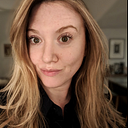Why Pair Programming May Still Be The Best Model for Planning
I originally posted a version of these thoughts on my Tumblr in 2013. A few things have changed but not enough. In the last few years at Edelman, we’ve continued shaping our departments to grow brand planning, deepen comms planning, and evolve our analytics and research divisions into a powerful Intelligence offering. But after discussing empathy and agile methodologies over dinner last night with a friend who works at Pivotal Labs, I got a nagging feeling I should revisit these old musings.
“Data is something we create, but it’s also something we imagine,” writes Kate Crawford on “Why Big Data is Not Truth” for the NYTimes. The author goes on to say, when it comes to big data, “It’s only as good as the people using it.” And that gets to the heart of why good data interrogators and interpreters are so hard to find.
In advertising and communications, we increasingly use digital data for primary research. We tend to call the departments that “own” data or this responsibility Insights and Analytics. The thing is, great data analysts and great insights people are more often than not, two people, yet we keep trying to staff teams with single people who can miraculously embody both skillsets. We’re expecting that person to be able to gather and mine data, find the drama in it, and make a compelling case for its implications to our creative teams and clients.
A few weekends ago I was talking with a couple of strategic planners who work in architecture firms. Increasingly, their remit is to understand how ambient data influences behavior and how people move about physical spaces. As we talked about the ins and outs of our roles and the teams we needed to build in the coming months, we kept circling around the idea of hiring pairs.
During my time as a product manager, working in agile environments, I was exposed to Pair Programming in which two programmers work together at one workstation. The driver, writes code while the other, the observer or navigator, reviews each line of code as it is typed in. (Worth noting that in software dev, these programmers switch roles frequently.) Back then, I loved being able to see how their togetherness not only allowed us to ship more good stuff, more often, but their relationship encouraged them to build trust and tenacity in the work. Their allegiance helped them have healthy arguments about why something should or should not be pursued. Together, as partners, they would discover, divide, decide, and do. And over time, they would establish a rhythm that looked like instinct but was deep knowledge and finely-tuned practice playing out and paying off.
Fast forward to working in the world of advertising and communications, where it’s common to find and hire creatives working as partners, am I’m keen to explore what it would be like to hire and onboard a planner and analyst at the same time, too. Bring them into the organization as a pair, seat them as a team, and give them the responsibility to not only own and pursue insights jointly but communicate their findings together.
My brilliant colleague and fellow planner in Chicago, Josh Baze, once commented that finding an insight was about the place where a “holy shit number” and a cultural truth sort of crash into each other. I, of course, immediately stole that concept and made it part of our process and training in New York because it delightfully sums up what a planner is hunting down. But the more I think about it, and the more I do of it, the more I feel like the hunt oughtn't be so lonely.
Perhaps organizations would fear the expense, potential overlap, confusion about roles and responsibilities, authors of briefs and ultimate accountability. But between software and creative, we do have a working model to examine. At the very least, it’s time to staff projects this way and watch what happens.
